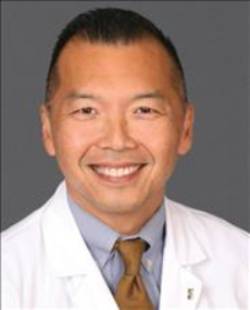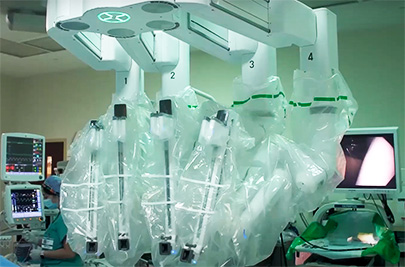
Education
Pathway to Excellence: Establishing Clinical Care Pathways for Open Aortic Aneurysm Surgery
3 min. read
Baptist Health Boca Raton Regional Hospital
When you have been diagnosed with an aortic aneurysm, a life-threatening condition, you want the best treatment possible. In some cases, open surgical repair, versus endovascular repair or stenting, may be the safest and most durable long-term strategy.
An aortic aneurysm is a balloon-like bulge in the aorta, the largest artery that carries oxygen-rich blood from the heart to the rest of the body. Small aortic aneurysms may be safely monitored with ultrasounds, but for larger aneurysms, the force of blood pressure can cause a split or rupture in the weakened artery wall. Such incidents can be fatal in as many as 80 percent of cases.
Patients should evaluate all their options by asking questions about treatment alternatives. When open surgery is recommended, it is important to select a hospital with a comprehensive, multidisciplinary program that takes a “team” approach to patient care.

W. Anthony Lee, M.D., chief of vascular surgery at Boca Raton Regional Hospital, part of Baptist Health
“When seeking care to undergo repair of a condition such as an aortic aneurysm, it is critically important to select a surgeon and a hospital that handle a high volume of these cases,” says W. Anthony Lee, M.D., chief of vascular surgery at Boca Raton Regional Hospital, part of Baptist Health. “With the increase in endovascular procedures, these types of open surgeries are now rarely performed in many hospitals, and many surgeons lack the experience and skill set to perform such complex repairs.”
At Boca Regional, Dr. Lee and Leslie Renfro, M.D., director of vascular anesthesia, have fine-tuned every aspect of the surgery to repair aortic aneurysms with implementation of a clinical care pathway designed to provide the highest quality, evidence-based care in a consistent manner. These practice guidelines, or protocols, have been hugely successful, shortening hospital stays for this type of surgery by over 40 percent, from an average of 6 days to 3.5 days, he says. In addition, the protocols have helped reduce surgical complications by more than 30 percent and have cut hospital readmissions by almost 50 percent, he says.
“This protocol is a carefully designed framework that guides every step of the surgical journey, ensuring a standardized and patient-centric approach,” Dr. Lee explains.
While the concept of clinical pathways is not new, no clear guidelines exist for aortic surgery, Dr. Lee says. That’s why Boca Regional’s multidisciplinary team of providers established a unique protocol; they have documented its impact over the past three years.
Clinical pathways foster effective communication and collaboration. With detailed protocols, surgeons, anesthesiologists, surgical technicians, nurses and other healthcare professionals can work cohesively — improving their efficiency, reducing the likelihood of errors and raising the overall quality of care. This collaborative approach ensures that every member of the team is on the same page, Dr. Lee says.
“These protocols define provider roles and responsibilities, as well as postoperative milestones for patients,” Dr. Lee says. “Each step was carefully designed and based on the latest medical research. They bring an additional level of standardization to surgical procedures and ensure that every patient, regardless of the complexity of their condition, benefits from the most up-to-date and effective treatment.”
Every detail is covered, from how much liquids patients can drink the night before surgery to how soon they can eat afterwards. The protocols also standardize postoperative care and patient monitoring, and outline an innovative approach to pain management that was developed by Dr. Renfro.
At Boca Regional, in addition to providing general anesthesia, Dr. Renfro places a very small catheter into the back of the patients just prior to surgery. This allows them to continuously receive local anesthetic medication directly to the incision site before, during and after the procedure, alleviating discomfort. The use of this technique for open aortic aneurysm surgery is unique to Boca Regional, Dr. Lee says. Dr. Renfro adds the protocol has resulted in a 45 percent reduction in the use of postoperative opioids.
The clinical pathway also empowers patients by outlining the surgical process and what can be expected through standardized educational materials and preoperative counseling, Dr. Lee says. Patients are better prepared to actively participate in their care, make informed decisions and adhere to postoperative instructions.
“Many important outcomes have been profoundly impacted by this clinical pathway,” Dr. Lee says. “It has about 50 or 60 different elements to it.”
The objective is a better experience and better outcomes for patients.
“When it comes to fixing an aortic aneurysm, the choice of treatment needs to be the correct one, and most importantly, result in a permanent fix,” Dr. Lee says. “If done properly by a skilled vascular surgeon, one can enjoy an excellent quality of life for many years.”
Healthcare that Cares
Related Stories
View All Articles
What Exactly is ‘Cardiovascular Kidney Metabolic Syndrome’ and Why It’s So Important
March 28, 2024
3 min. read

New Hybrid Endovascular Suite Offers Care for Complex Cardiovascular Conditions
March 26, 2024
2 min. read

Meet an Essential Member of the Surgical Team You May Not Know
March 12, 2024
3 min. read
Video